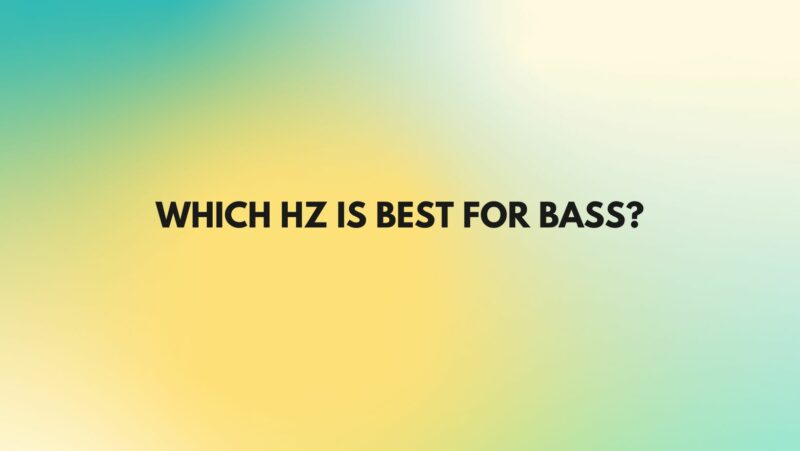The quest for the perfect bass is a central concern for audiophiles, music producers, and enthusiasts alike. The term “bass” refers to the lower frequencies in the audio spectrum that provide depth, rhythm, and resonance to music. However, determining which specific Hz (Hertz) range is best for bass can be a complex and subjective matter. In this comprehensive article, we will explore the factors that influence the perception of good bass, the role of Hz values in bass frequencies, and how to achieve the ideal bass response in various contexts.
Understanding the Importance of Bass Frequencies
Bass frequencies are a fundamental element of music and audio. They add weight and emotional depth to compositions, making the listening experience more immersive and enjoyable. Here’s why bass frequencies are crucial:
- Rhythm and Groove: Bass frequencies provide the rhythmic foundation of music. They establish the groove, keeping listeners engaged and encouraging movement and dance.
- Emotional Impact: Deep bass frequencies have the power to evoke strong emotions. Whether it’s the thunderous rumble of a cinematic soundtrack or the pulsating bassline of a dance track, bass adds emotional resonance to music.
- Sonic Balance: Bass frequencies complement higher-pitched elements in the audio spectrum, creating a balanced and full sound. They contribute to the overall sonic texture, making the music more engaging.
The Role of Hz Values in Bass Frequencies
When discussing bass, Hz values are crucial because they define the specific frequency range of the bass frequencies. The audio spectrum typically ranges from 20 Hz (ultra-low bass) to 20,000 Hz (ultra-high treble). The ideal Hz value for bass can vary depending on the context:
- Sub-Bass (20-60 Hz): Frequencies in the 20 Hz to 60 Hz range are known as sub-bass. These frequencies are felt more than heard and are responsible for producing vibrations that are felt in the body. Sub-bass is essential for genres like dubstep, hip-hop, and EDM, where the emphasis is on deep, rumbling bass.
- Low Bass (60-120 Hz): The 60 Hz to 120 Hz range is often referred to as low bass. This range provides the rhythmic and harmonic foundation for many musical styles, including rock, pop, and jazz. Low bass adds warmth and depth to the sound.
Customizing Bass Frequencies
Achieving the ideal bass response often requires customization to suit individual preferences, audio equipment, and room acoustics. Here’s how to tailor bass frequencies to your liking:
- Equalization (EQ): Using an equalizer, you can adjust specific frequency bands, including bass frequencies, to boost or cut certain Hz values. This allows you to fine-tune the bass response to match your preferences and the music you are listening to.
- Subwoofer Setup: If you have a subwoofer in your audio system, optimize its settings, including volume, crossover frequency, and phase, to ensure it complements your main speakers and room acoustics.
- Room Acoustics: The acoustic properties of your listening space can greatly affect bass response. Room treatments, bass traps, and speaker placement can help address issues like standing waves and uneven bass distribution.
Conclusion
The “best” Hz value for bass ultimately depends on your musical preferences, the equipment you are using, and the acoustics of your listening environment. There is no one-size-fits-all answer, as what sounds perfect to one person may not be the same for another. The key to achieving the ideal bass response is experimentation, careful listening, and customization to create a bass experience that resonates with your musical tastes and delivers the immersive and impactful sound you desire.


